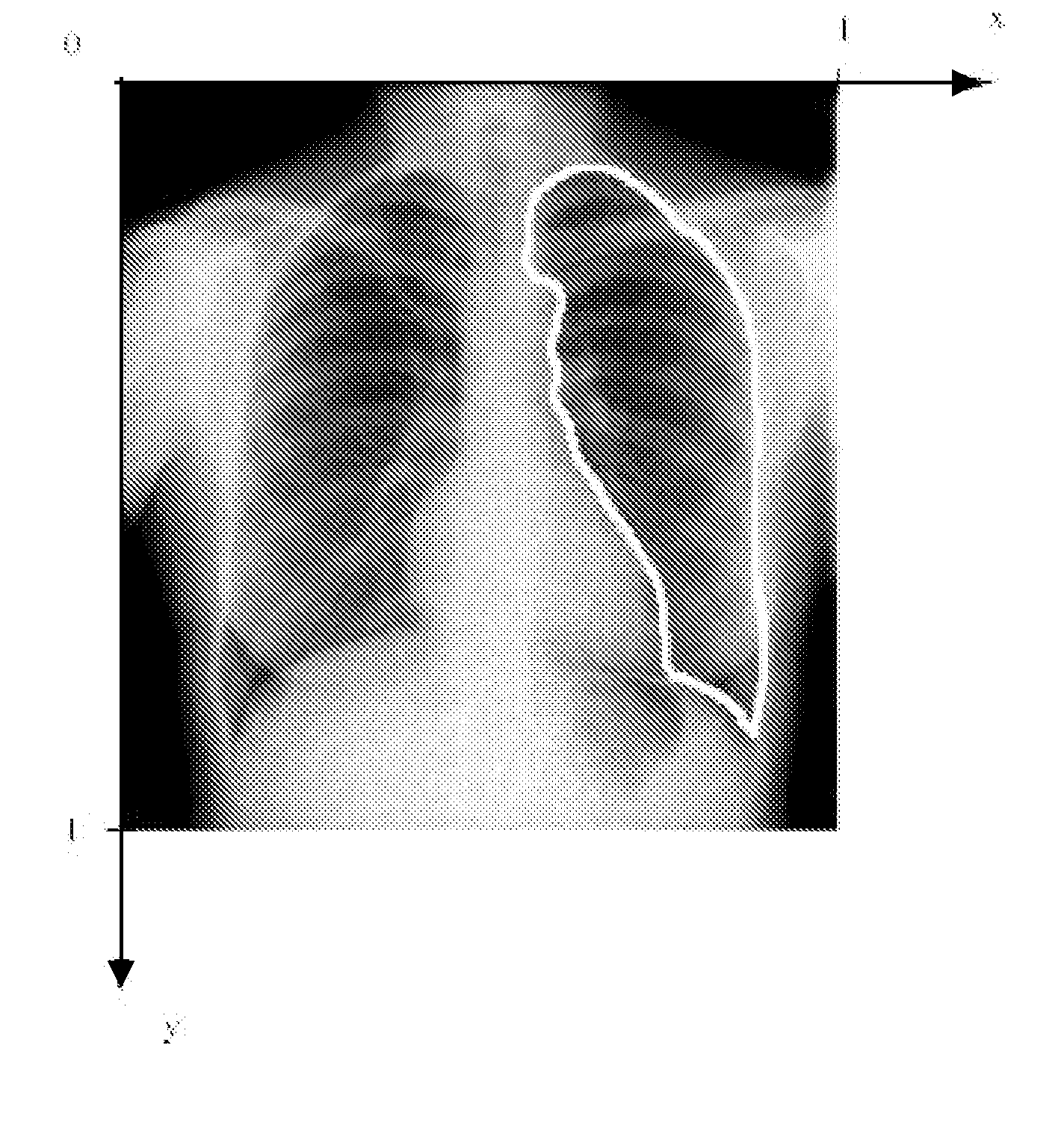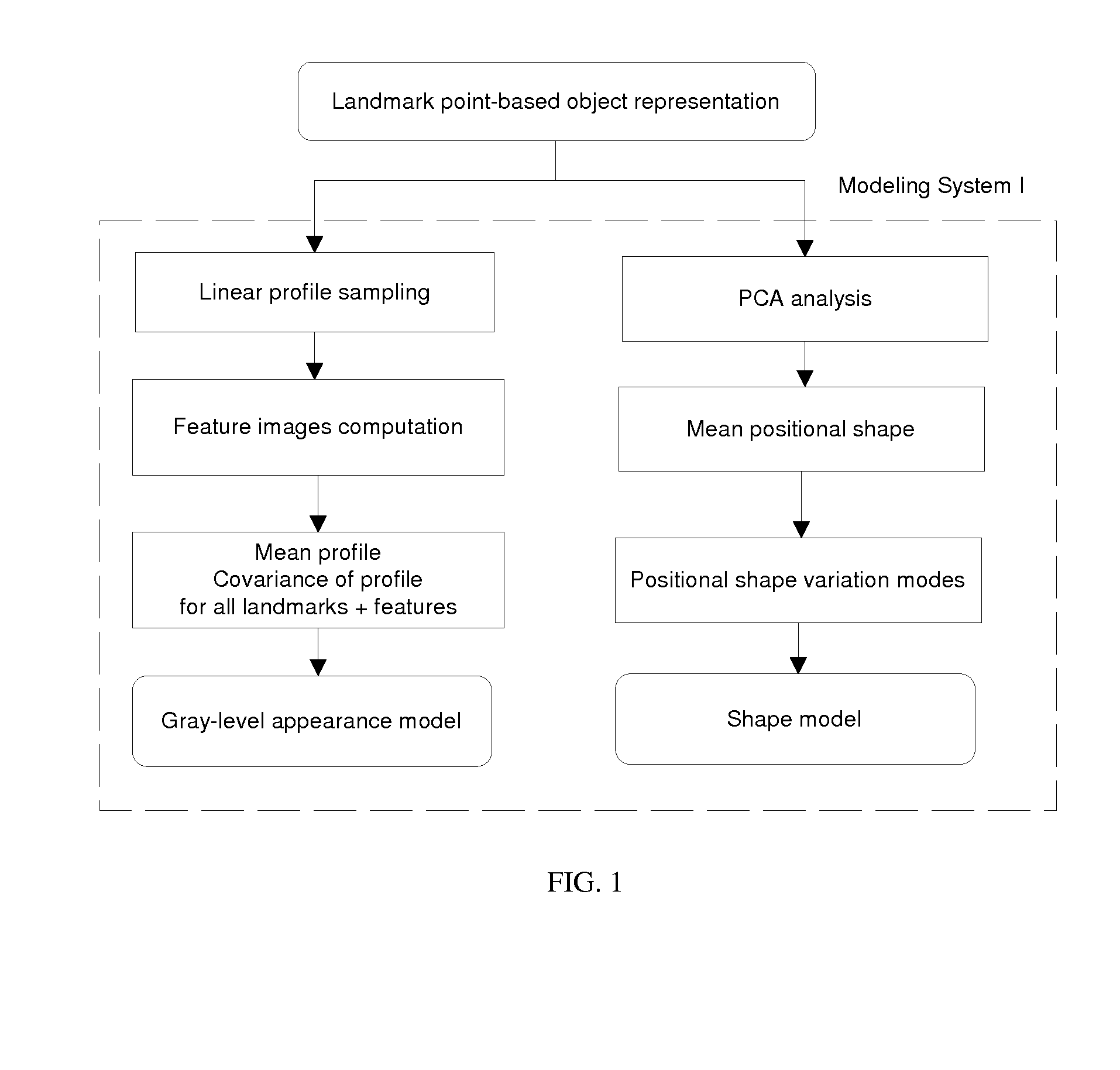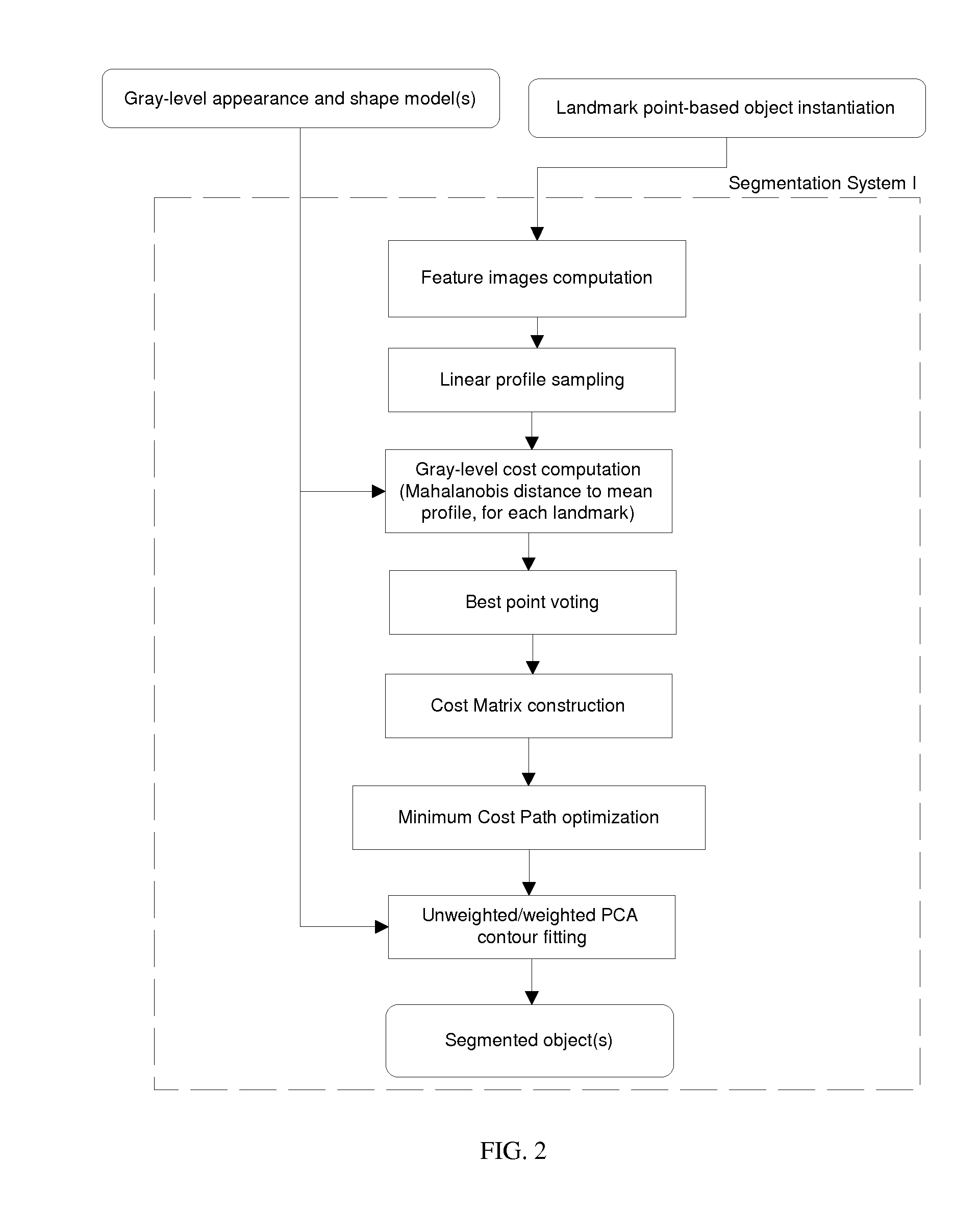Method of Segmenting Anatomic Entities in 3D Digital Medical Images
- Summary
- Abstract
- Description
- Claims
- Application Information
AI Technical Summary
Benefits of technology
Problems solved by technology
Method used
Image
Examples
Embodiment Construction
[0095]The present invention will be explained in detail with regard to a specific application, namely the segmentation of the lung field in a medical image.
[0096]Object Representation
[0097]In the specific embodiments of the method of the present invention that are described below, an anatomical object in an image is represented mathematically as a fixed number of discrete, labeled points lying on the contour that encloses the object, i.e. p1=(x1,y1), . . . , pn=(xn,un).
[0098]The contour{pi}i1n runs from p1 to pnand back to p1. Hence, the object may be captured by a discrete shape vector x=(x1,y1, . . . , xn,yn)T. The coordinate system is chosen such that all points inside the image area lie in the domain [0,1]x[0,1] (FIG. 7).
[0099]Additionally, characteristic points lying in the region enclosed by the contour may be added to the object representation as well, allowing e.g. measurement of entities lying inside the object.
[0100]The segmentation scheme described below needs a number of...
PUM
 Login to View More
Login to View More Abstract
Description
Claims
Application Information
 Login to View More
Login to View More - R&D
- Intellectual Property
- Life Sciences
- Materials
- Tech Scout
- Unparalleled Data Quality
- Higher Quality Content
- 60% Fewer Hallucinations
Browse by: Latest US Patents, China's latest patents, Technical Efficacy Thesaurus, Application Domain, Technology Topic, Popular Technical Reports.
© 2025 PatSnap. All rights reserved.Legal|Privacy policy|Modern Slavery Act Transparency Statement|Sitemap|About US| Contact US: help@patsnap.com



